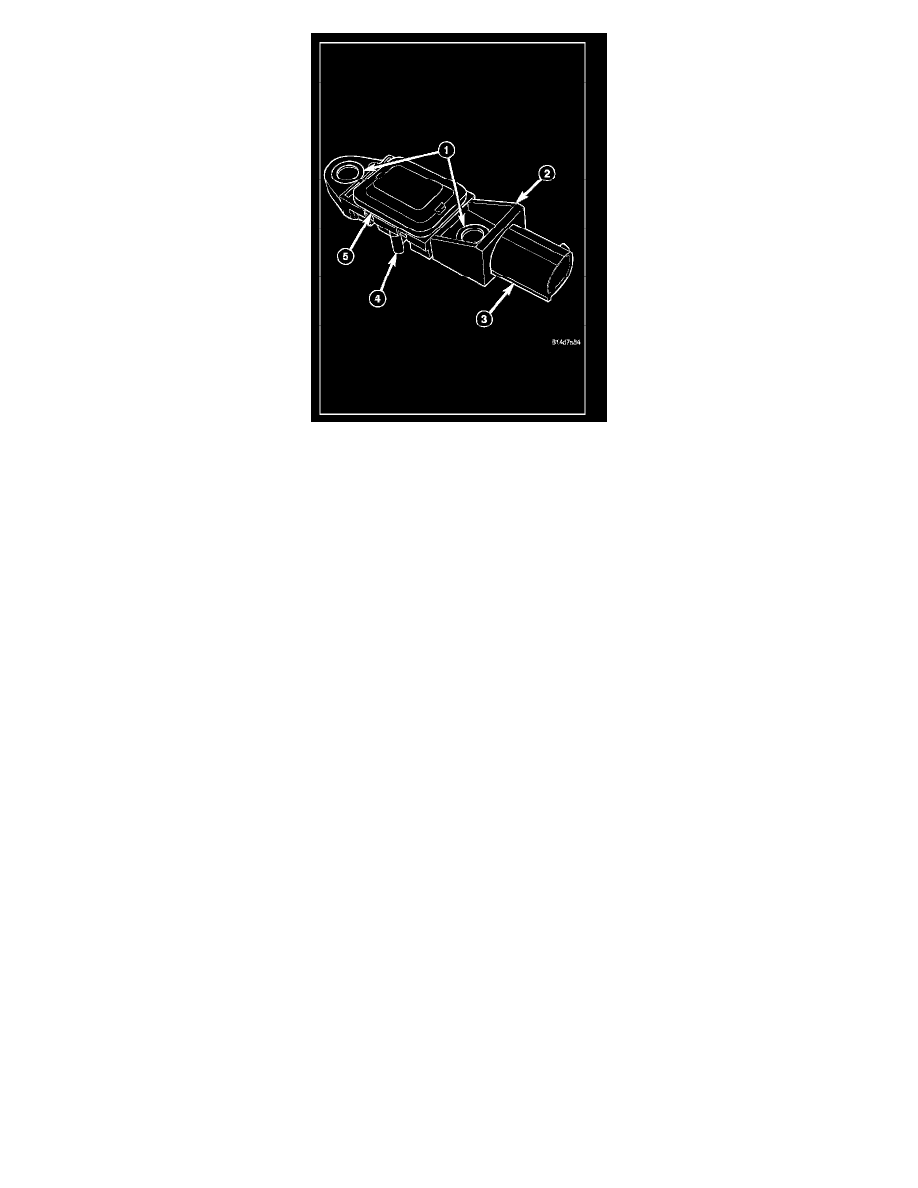Raider 2WD V6-3.7L (2008)

Two side impact sensors (2) are used on this vehicle when it is equipped with the optional side curtain air.bags, one each for the left and right sides of the
vehicle. These sensors are mounted remotely from the impact sensor that is internal to the Occupant Restraint Controller (ORC). Each side sensor is
secured with two screws to the floor panel beneath the outboard seat adjuster riser within the passenger compartment. The sensor housing has an integral
connector receptacle (3), an integral anti-rotation pin (4), and two integral mounting holes (1) with metal sleeves to provide crush protection.
The right and left side impact sensors are identical in construction and calibration. A cavity in the center of the molded plastic impact sensor housing
contains the electronic circuitry of the sensor which includes an electronic communication chip and an electronic impact sensor. Potting material fills the
cavity and a stamped cover (5) is crimped over the cavity to seal and protect the internal electronic circuitry and components. The side impact sensors
are each connected to the vehicle electrical system through a dedicated take out and connector of the body wire harness.
The impact sensors cannot be repaired or adjusted and, if damaged or ineffective, they must be replaced.
FRONT IMPACT SENSOR - OPERATION
The front impact sensors are electronic accelerometers that sense the rate of vehicle deceleration, which provides verification of the direction and
severity of an impact. Each sensor also contains an electronic communication chip that allows the unit to communicate the sensor status as well as sensor
fault information to the microprocessor in the Occupant Restraint Controller (ORC).
The ORC microprocessor continuously monitors all of the passive restraint system electrical circuits to determine the system readiness. If the ORC
detects a monitored system fault, it sets a Diagnostic Trouble Code (DTC) and controls the airbag indicator operation accordingly. The impact sensors
each receive battery current and ground through dedicated left and right sensor plus and minus circuits from the ORC. The impact sensors and the ORC
communicate by modulating the voltage in the sensor plus circuit.
The hard wired circuits between the front impact sensors and the ORC may be diagnosed using conventional diagnostic tools and procedures. Refer to
the appropriate wiring information. However, conventional diagnostic methods will not prove conclusive in the diagnosis of the impact sensors or the
electronic controls or communication between other modules and devices that provide features of the supplemental restraint system. The most reliable,
efficient, and accurate means to diagnose the impact sensors or the electronic controls and communication related to front impact sensor operation
requires the use of a diagnostic scan tool. Refer to the appropriate diagnostic information.
SIDE IMPACT SENSOR - OPERATION
The side impact sensors are electronic accelerometers that sense the rate of vehicle deceleration, which provides verification of the direction and severity
of an impact. Each sensor also contains an electronic communication chip that allows the unit to communicate the sensor status as well as sensor fault
information to the microprocessor in the Occupant Restraint Controller (ORC).
The ORC microprocessor continuously monitors all of the side passive restraint system electrical circuits to determine the system readiness. If the ORC
detects a monitored system fault, it sets a Diagnostic Trouble Code (DTC) and controls the airbag indicator operation accordingly. The impact sensors
each receive battery current and ground through left or right sensor plus and minus circuits from the ORC. The impact sensors and the ORC
communicate by modulating the voltage in the sensor plus circuit.
The hard wired circuits between the side impact sensors and the ORC may be diagnosed using conventional diagnostic tools and procedures. Refer to the
appropriate wiring information. However, conventional diagnostic methods will not prove conclusive in the diagnosis of the impact sensors or the
